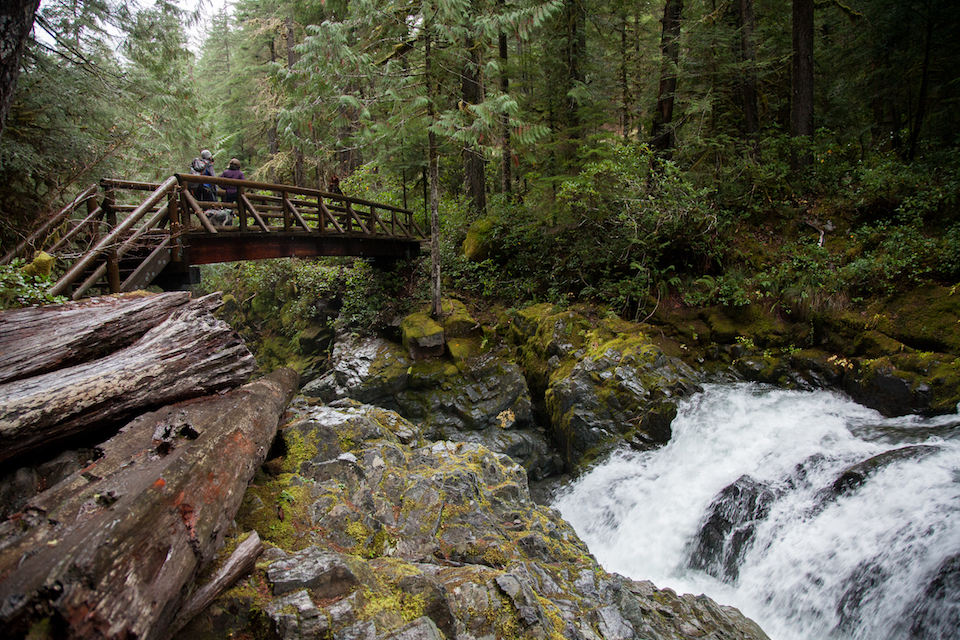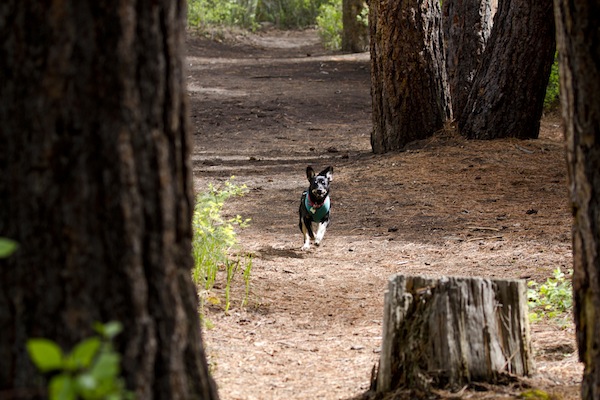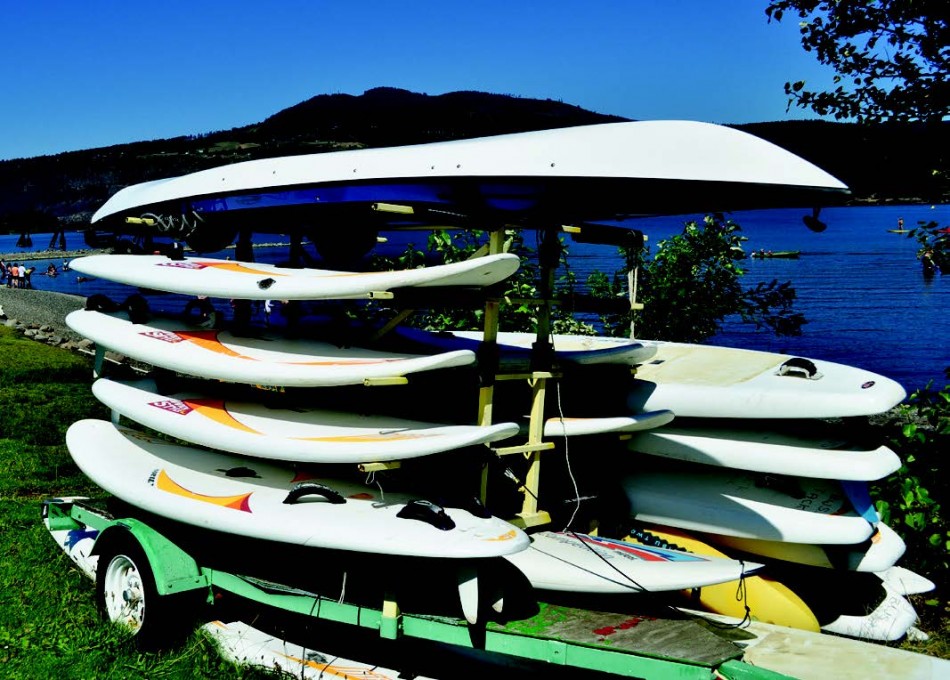written by Tricia Louvar | photos by Tim LaBarge
I had the car paid off and then I got all ballsy. The backcountry road tossed around my not-so-rustic, not-so-four-by-four Toyota Prius. “Please don’t pop, please don’t pop,” I said to the tires. My dog Karma poked up her head in the back hatch and looked out the window. All the bobbling disturbed her nap.
The deep ruts, shaped like rigatoni, peppered the single-lane road. One road cuts through the Willamette National Forest to reach Jawbone Flats. This was a daypack hike. I hadn’t seen another soul.
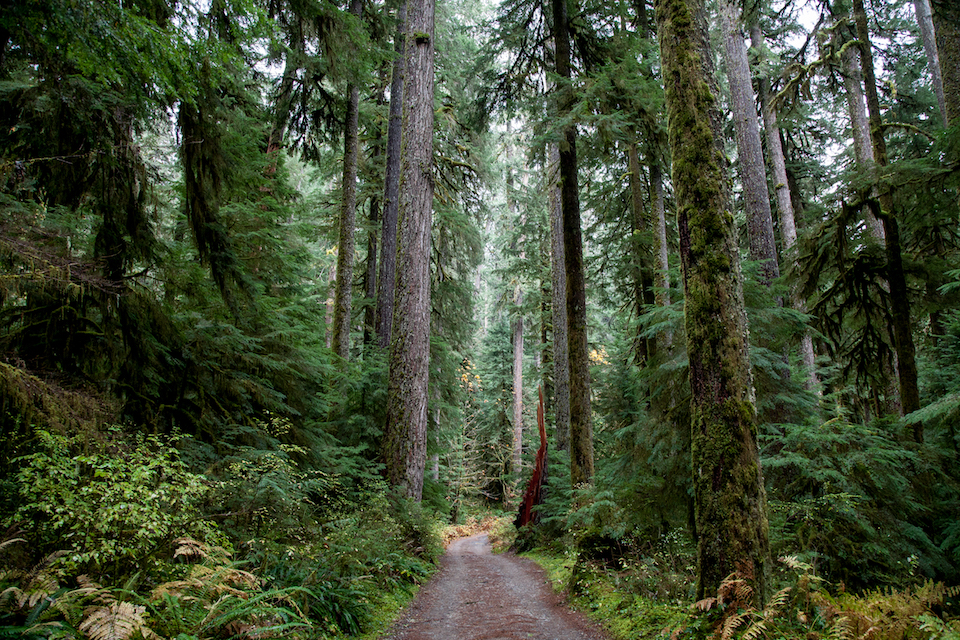
From Highway 22, the 20-mile drive on a forest road took me one hour. The rain pelted and the clouds pressed down on the treetops. This area was off the grid. No cell coverage. No roadside assistance. Once I reached the Opal Creek trailhead’s parking lot, my jaw dropped. I was not alone.
Forty, maybe fifty Millennials gathered around a pack leader. Some of them, with their dreadlocks and rounded shoulders and brimmed hats and beanies, held 5-gallon buckets. Some wore wool blanket ponchos. This wasn’t exactly what I had been expecting.
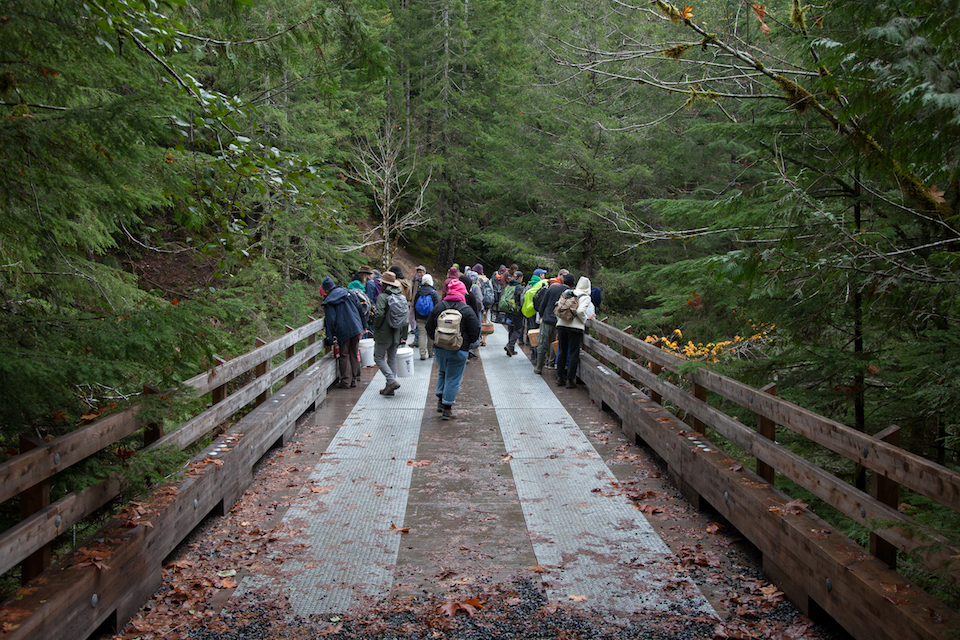
I strapped on my daypack (see its complete contents in the sidebar), harnessed Karma and hit the trail, flanked by the Evergreen State College students from Olympia, Washington. They, too, were headed to Jawbone Flats, the base camp for Opal Creek Ancient Forest Center to begin their four-day backcountry intensive study on mushrooms. They would bunk at the cabins at Jawbone Flats, an abandoned historic mining town at the edge of the Opal Creek Wilderness and Bull to the Woods Wilderness.
I walked faster to lose the scientists on this new terrain, hurrying over puddles and rocks. Karma wanted to stop and smell all the doggy Post-it notes. The farther I walked into the preserve, the more rain-braised steel parts from the miners’ past popped up on the forest floor. Seeing humans’ dross left in the natural world always makes part of me sad and annoyingly self-righteous.
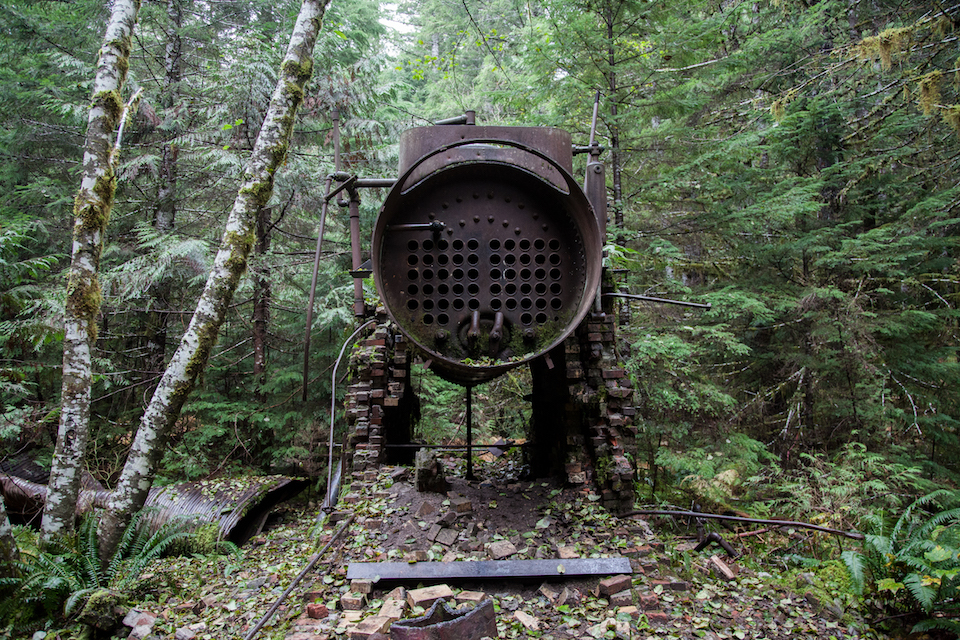
The miners arrived in 1859, when they discovered gold, lead, zinc, silver and copper. In 1929, they built basecamp, which became known as Jawbone Flats. Mining carried on for another sixty-three years until the mining company donated the land to a nonprofit. By 1996, with devoted conservation efforts, the federal government passed legislation and deemed the area Opal Creek Wilderness and Scenic Recreation Area.
Opal Creek Ancient Forest Center manages the little ghost town of twenty-four rustic buildings and promotes conservation through educational experiences in the wilderness. Each year, the area hosts 20,000 visitors. They come for day hikes, wilderness backpacking expeditions, an outdoor school in the spring and fall, cabin rentals and workshops.
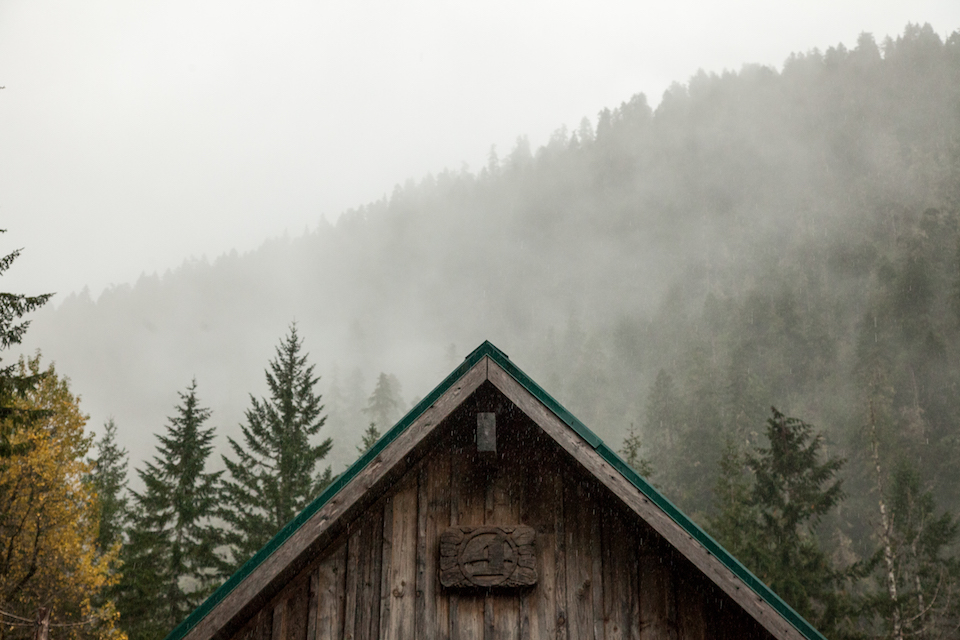
The difficult backcountry 16.2-mile loop hike to Whetstone Mountain-Battle Ax Creek leaves from basecamp and has an elevation gain of about 4,000 feet. Skip this one as a family-friendly adventure. Instead, the center has a remarkable number of youth one-week backcountry expeditions. Students (ages 10 to 18) learn it all from their certified instructors: how to properly pack a backpack, how to prep their feet for endurance hikes, how to determine fuel and rations, how to poop in the woods without the anxiety. The expeditions, along with their scientific focus on forestry, stream ecology, glacial forces and botany lessons, become powerful experiences for young backpackers, knowing they made it due to their own strength, willpower and endurance.
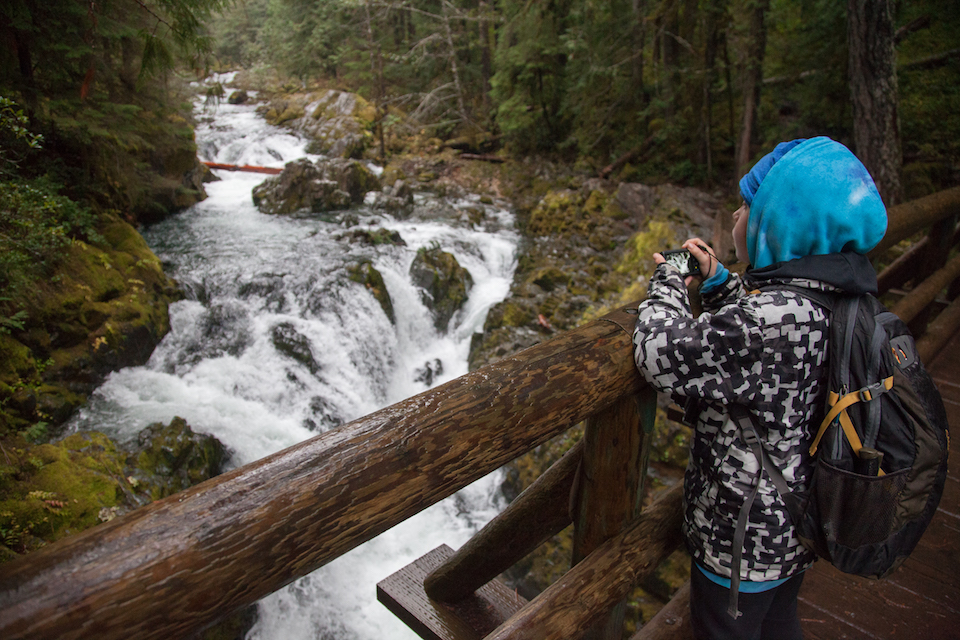
The longer I hiked Opal Creek and stayed in Jawbone Flats, the dimmer the light became and the heavier the rain fell. At 4 p.m., with the almost 72,000 acres of raw uninterrupted low-growth old forest in the western Cascades behind me, I cinched my daypack tighter, attached Karma to a running bungee and trail ran back to the car past the western hemlock, western red cedar and Douglas fir.
Back at the trailhead, I opened the hatch and toweled off Karma, who whimpered and shook out her sopping ears, caked paws and mud spray on her muzzle. I stripped in the car and put on dry gear. My eyeglasses fogged. My hair dripped down my back. With the heater blazing, I drank the remains of lukewarm tea, and we split a quinoa bar. I kept the dark chocolate squares for myself, knowing that next time I come, probably in the summer, there will be three other people with me—two kids begging for snacks, one husband asking me to pass the tea. For now, it was my own soggy historic adventure.


